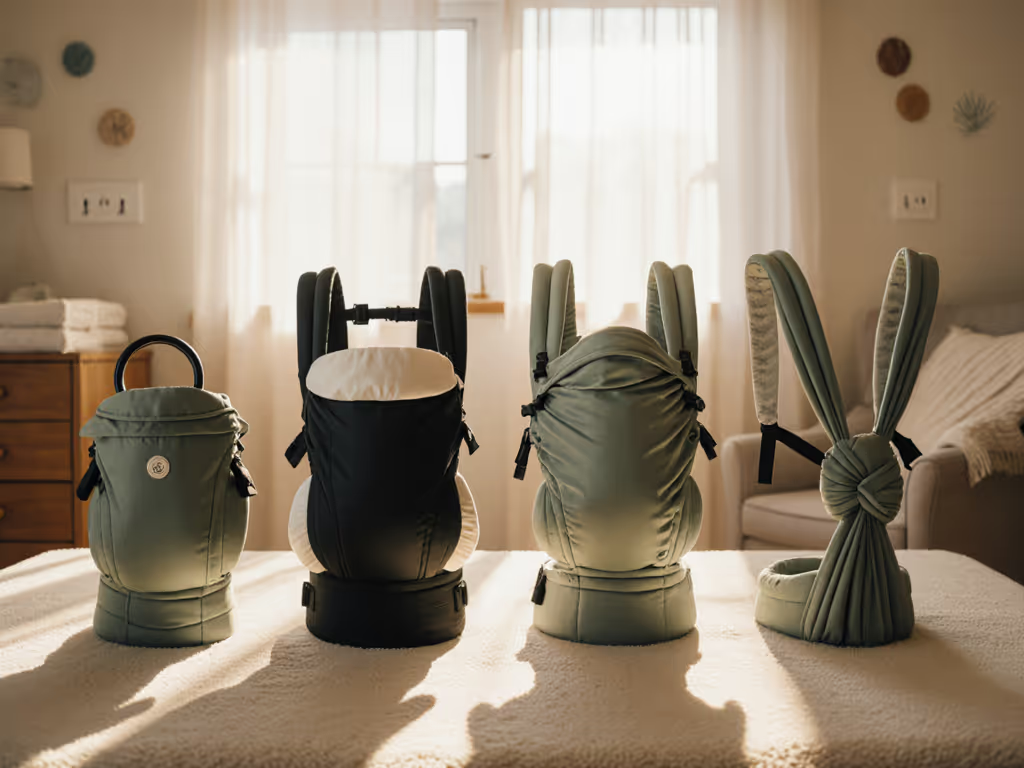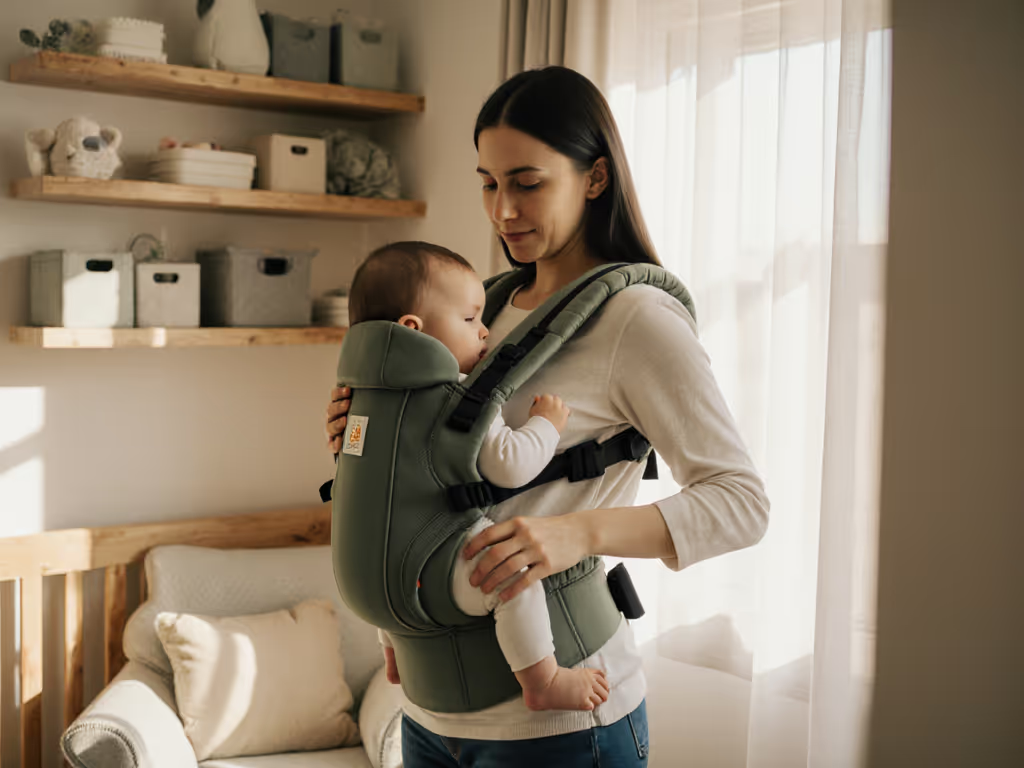
Babywearing Explained: Benefits, Types, and Safety
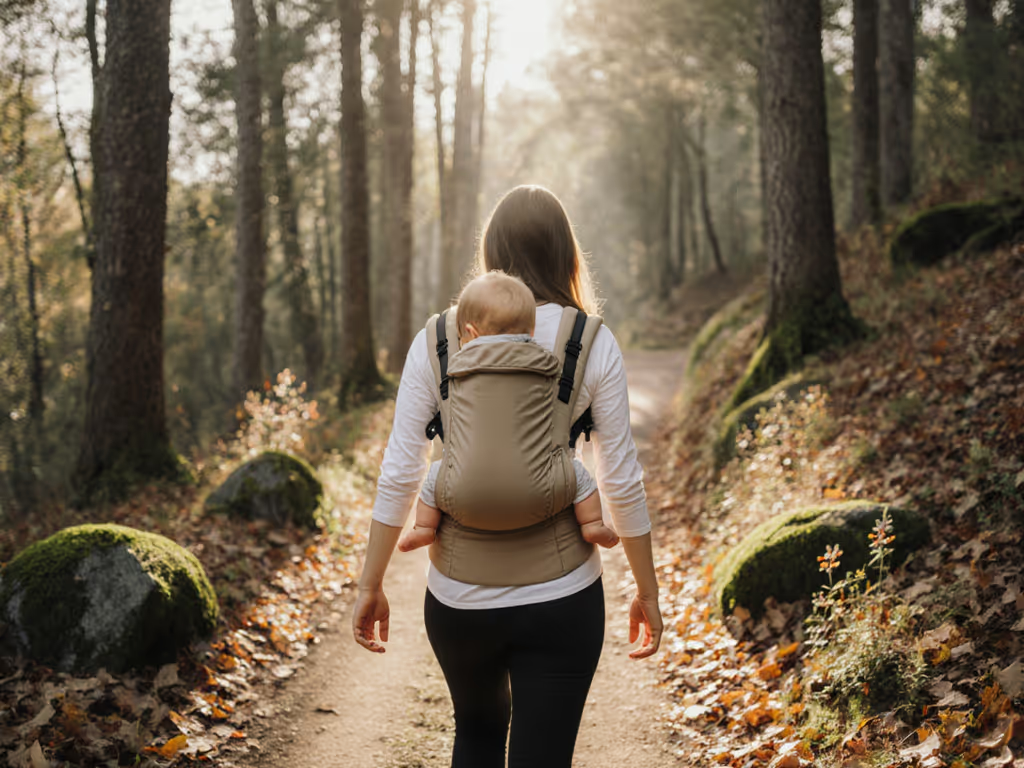
Across the globe, families have practiced babywearing for thousands of years. More than 43 percent of parents report fewer instances of crying when they keep their babies close throughout the day. This approach goes beyond convenience, fostering deep emotional bonds and providing vital comfort for both baby and caregiver. Choosing to carry your child can connect you to rich global traditions while delivering practical benefits that support healthy development and daily life.
Key Takeaways
| Point | Details |
|---|---|
| Definition of Babywearing | Babywearing is an ancient practice involving carrying infants close using special carriers, promoting bonding and practical multitasking. |
| Benefits for Development | Carrying infants enhances emotional security, cognitive growth, and physical health, while simplifying caregiver mobility and daily tasks. |
| Carrier Variability | There are various baby carrier types available, including wraps, ring slings, and structured carriers, each suited to different needs and preferences. |
| Safety Guidelines | Ensure proper positioning and airway management to keep infants safe during babywearing, adhering to follow key safety principles. |
What Is Babywearing? Definition and History
Babywearing is more than just carrying your baby - it's an ancient practice that connects caregivers and infants through physical closeness. Simply defined, babywearing involves using a specialized fabric carrier or sling to keep your baby securely attached to your body while moving through daily activities. This time-honored tradition has roots spanning thousands of years across diverse global cultures, from the Inuit amauti of Arctic regions to the bening carriers used in Borneo.
Traditionally, babywearing emerged as a practical survival technique, allowing parents to complete essential tasks while keeping their infants safe and warm. Indigenous communities worldwide developed intricate carrying techniques that protected babies during hunting, gathering, and agricultural work. In modern industrialized societies, the practice has been reimagined through the lens of attachment parenting, a philosophy popularized by pediatrician William Sears that emphasizes continuous physical connection between caregiver and child.
While attachment parenting principles have helped mainstream babywearing, it's important to understand that the method's benefits extend beyond any single parenting approach. Babywearing offers practical advantages for contemporary families:
- Keeps hands free for multitasking
- Promotes infant bonding and emotional security
- Supports easier breastfeeding and mobility
- Provides consistent physical comfort for babies
Today, babywearing represents a beautiful intersection of cultural tradition and modern parenting - a practice that continues to evolve while maintaining its core purpose of nurturing connection between caregiver and child.
Popular Babywearing Methods and Carrier Types
Babywearing isn't a one-size-fits-all experience - it's a world of diverse carrier types designed to suit different body types, baby ages, and personal preferences. From traditional cultural designs to modern ergonomic solutions, caregivers have an incredible range of options to choose from. The most popular carrier types include wraps, ring slings, soft structured carriers, and traditional styles like the Korean podaegi, each offering unique advantages for comfort and practicality.
Wrap carriers represent the most versatile option, featuring long pieces of fabric that can be tied in multiple configurations to suit different carrying positions. Ring slings provide a quick, adjustable solution with fabric threaded through rings, allowing rapid tension modifications and easy breastfeeding. Soft structured carriers offer more rigid support with padded straps and buckles, ideal for longer wearing periods and providing excellent weight distribution across the caregiver's body.
Traditional cultural carriers bring fascinating diversity to babywearing techniques. The Korean podaegi, for instance, uses a large piece of fabric wrapped and tied specifically for back carrying, demonstrating how different cultures have developed unique solutions for infant transportation. Each carrier type has specific strengths:
- Wraps: Maximum flexibility, works for newborns to toddlers
- Ring Slings: Quick wear, excellent for breastfeeding
- Soft Structured Carriers: Maximum support, ideal for longer walks
- Traditional Carriers: Cultural heritage, specialized carrying techniques
Choosing the right carrier depends on your body type, baby's age, and personal comfort. Experimenting with different styles will help you find the perfect match for your babywearing journey.
Here's a comparison of popular baby carrier types:
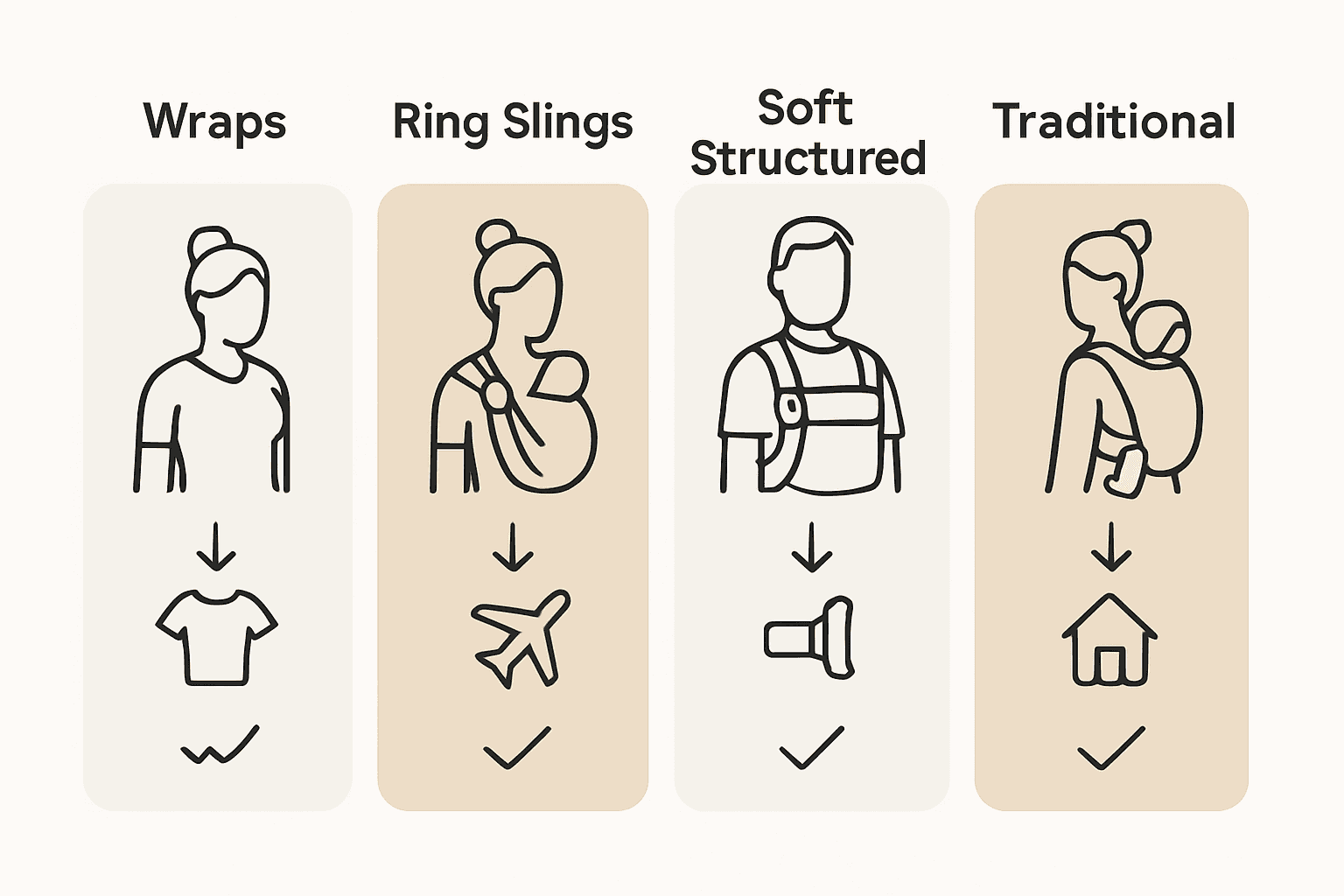
| Carrier Type | Key Features | Best For |
|---|---|---|
| Wraps | Maximum flexibility<br>Custom fit | Newborns to toddlers |
| Ring Slings | Quick to wear<br>Easy adjustments | Breastfeeding<br>Short outings |
| Soft Structured Carriers | Padded straps<br>Buckles | Long walks<br>Heavier babies |
| Traditional Carriers | Cultural heritage<br>Special tying | Back carrying<br>Cultural methods |
Key Benefits for Babies and Caregivers
Babywearing isn't just a convenient practice - it's a powerful tool for infant development and caregiver wellbeing. Scientific research reveals remarkable benefits that extend far beyond simple transportation. Carrying babies for just three hours daily can dramatically transform early childhood experiences, with studies showing up to a 43% reduction in overall infant crying and an impressive 51% decrease in nighttime distress.
For babies, the advantages are profound and multi-dimensional. Physical closeness provides critical developmental stimulation, supporting cognitive growth, emotional regulation, and sensory processing. Babies carried consistently experience more consistent vestibular movement, which helps develop balance and spatial awareness. The continuous contact also supports digestive health, reduces stress hormones, and creates a sense of security that promotes more regulated breathing and heart rates.
Caregivers experience equally significant benefits from consistent babywearing. The practice offers unprecedented hands-free convenience, allowing parents to complete daily tasks while maintaining intimate connection with their infant. These advantages extend across multiple domains:
- Emotional Connection: Increases oxytocin production for both baby and caregiver
- Practical Mobility: Enables multitasking during daily activities
- Breastfeeding Support: Facilitates easier, more discreet nursing
- Physical Recovery: Supports postpartum movement and gentle exercise
Ultimately, babywearing represents more than a parenting technique - it's a holistic approach to nurturing infant development while supporting caregiver wellness. By creating a responsive, continuous physical connection, families can experience enhanced bonding and developmental support through this ancient yet profoundly modern practice.
Safe Positioning and Usage Guidelines
Babywearing safety is not just a recommendation - it's a critical responsibility that requires careful attention and consistent practice. The most fundamental principle is ensuring your baby's airway remains clear and unobstructed at all times. This means positioning your infant high enough on your body that you can easily kiss the top of their head, with their face visible and chin lifted off their chest to prevent respiratory restrictions.
Proper positioning goes beyond airway management. Ergonomic support is crucial for both caregiver and baby. Infant carriers should support the natural "M" shape of a baby's legs, with knees positioned higher than their bottom, creating a spread-squat position that supports healthy hip development. Carriers should provide full back support, keeping the baby's spine in a neutral, slightly curved alignment that mimics their natural resting posture.
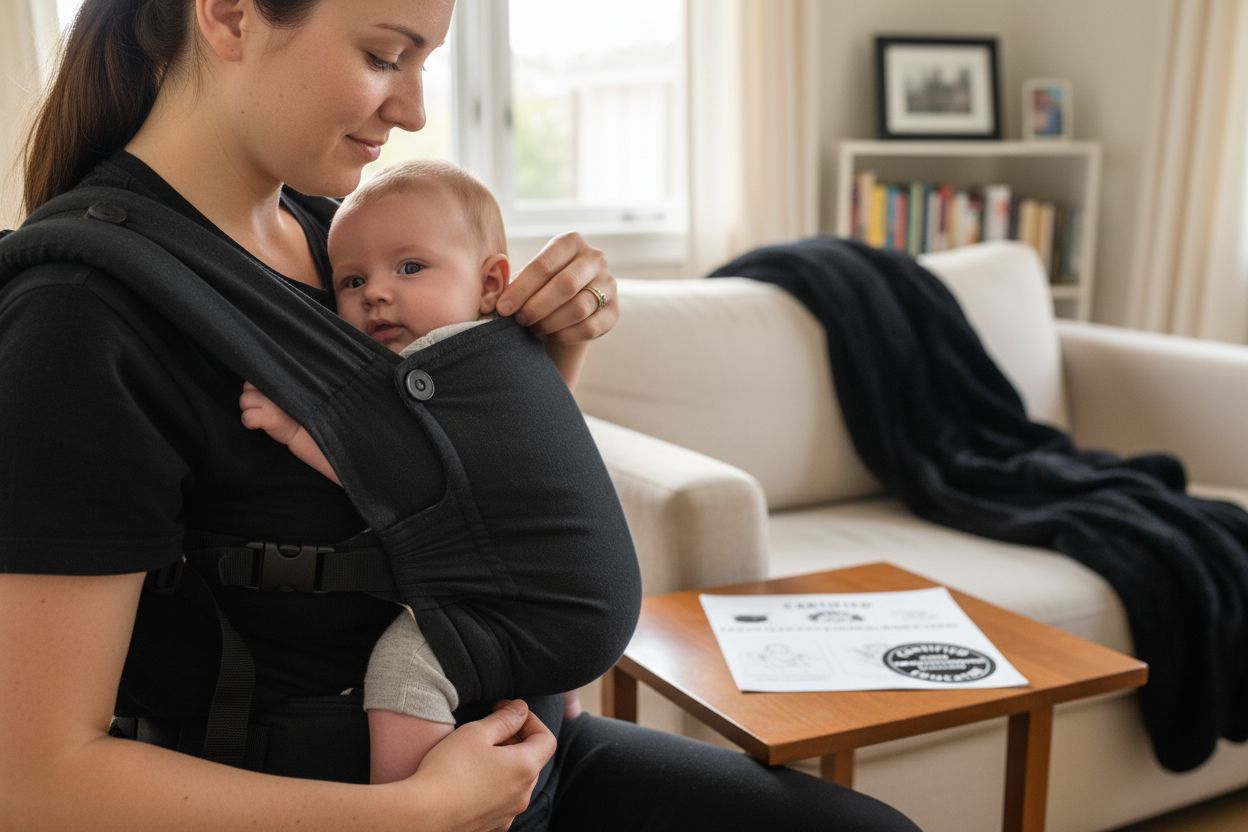
To guarantee maximum safety, follow these essential guidelines:
- Keep baby's face uncovered and visible
- Position baby high on chest ("kissable height")
- Ensure chin is not pressed against chest
- Check carrier straps and attachments before each use
- Maintain a snug but not overly tight fit
- Frequently monitor baby's position and comfort
While carriers come with manufacturer instructions, nothing replaces hands-on guidance from a certified babywearing educator. These professionals can provide personalized advice tailored to your specific carrier, body type, and infant's developmental stage. Remember: safety is an ongoing practice that requires constant attention and adaptation as your baby grows.
Common Babywearing Mistakes to Avoid
Improper carrier use can transform a beneficial practice into a potential safety risk. Many well-intentioned parents unknowingly make critical mistakes that compromise their baby's comfort and security. The most common error is wearing a carrier that's too loose, which prevents providing the stable, supportive environment essential for infant safety. A carrier should feel like a secure extension of your body, with minimal movement between you and your baby.
Positioning represents another crucial area where parents frequently stumble. Incorrect placement can lead to respiratory risks and physical discomfort. The TICKS safety checklist provides a simple framework to avoid these pitfalls: Tight carrier, In view of caregiver, Close enough to kiss, Keep chin off chest, Supported back. Many parents accidentally position their baby too low on the body or allow fabric to cover the infant's face, creating potential breathing hazards that can go unnoticed during daily activities.
Additional critical mistakes to watch for include:
- Over-tightening straps, causing uncomfortable compression
- Using carriers not appropriate for your baby's age or developmental stage
- Ignoring weight and size recommendations
- Wearing carriers while performing high-risk activities
- Failing to regularly inspect carrier for wear and tear
- Not adjusting carrier as baby grows and gains weight
Education is your best defense. Before each use, take a moment to check your carrier's fit, your baby's position, and potential risks. Consider consulting a certified babywearing educator who can provide personalized guidance and help you develop confidence in your carrying technique. Remember: safe babywearing is a skill that improves with practice and careful attention.
Discover Expert Guidance for Confident Babywearing
Still unsure which baby carrier will best support both your comfort and your baby's development? If you have struggled with finding safe positioning, choosing the right carrier type, or simply want peace of mind about your babywearing technique, you are not alone. The article highlighted the importance of safety, ergonomic support, and informed choices when it comes to wraps, soft structured carriers, and slings. These challenges can make you feel uncertain, especially with so many options and safety guidelines to follow.
Take the guesswork out of babywearing by getting easy access to comprehensive guides, detailed safety checklists, and independent carrier reviews tailored to your unique needs. Visit Caregiver Carry now to explore comparisons of popular baby carriers, practical tips for safe practice, and expert recommendations—all focused on promoting comfort, confidence, and healthy development for your child. Start your safer and more enjoyable babywearing journey today with advice you can trust. Learn more at Caregiver Carry.
Frequently Asked Questions
What is babywearing and why is it practiced?
Babywearing is the practice of carrying your baby using a specialized carrier or sling to promote physical closeness and facilitate daily activities. It has roots in various cultures and is often associated with attachment parenting, emphasizing the emotional bond between caregiver and infant.
What types of baby carriers are available and how do they compare?
The most popular baby carrier types include wraps, ring slings, soft structured carriers, and traditional carriers like the Korean podaegi. Wraps offer maximum flexibility, ring slings are quick to wear, soft structured carriers provide rigid support for longer periods, and traditional carriers exhibit cultural heritage with unique techniques.
What are the key benefits of babywearing for babies?
Babywearing provides numerous benefits for infants, including improved emotional security, better cognitive and physical development, and enhanced digestive health. Consistent carrying has also been shown to reduce crying and nighttime distress in babies.
What safety guidelines should I follow when babywearing?
To ensure safe babywearing, keep your baby's airway clear, position them high enough to kiss, and support their legs in an M shape. Always check the carrier's fit and monitor your baby's comfort frequently, and consider guidance from a certified babywearing educator.


